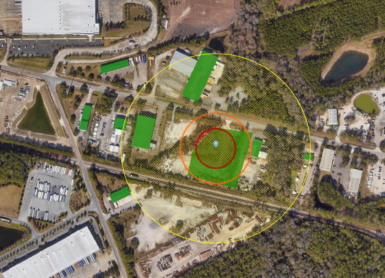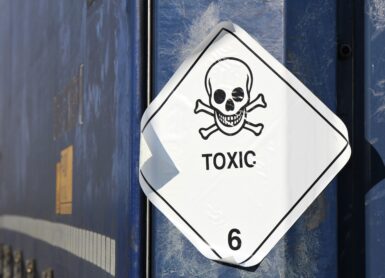
In 2005, the Buncefield accident showed us that a tank overfilling scenario could not be treated as a simple liquid spill.
After extensive research conducted by the HSE (Health and Safety Executive), it was established that liquid cascades tended to fragment into droplets, and a proportion of the release would form a vapour that could subsequently disperse and, if confined, explode.
The HSE published a Technical Note in 2013 that included a simple mathematical approach to simulate the vapour cloud generation due to evaporation from a cascading liquid. Unfortunately, this empirical approach was limited in its application to a few types of fuels, while the associated explosion prediction also restricted its usage to zero wind conditions and specific congestion situations.
During the 17th EFCE International Symposium on Loss Prevention and Safety Promotion in Process Industries, Gexcon’s Senior Research Scientist Hans Boot presented a paper entitled “An extended procedure to predict flammable cloud generation resulting from tank overfilling scenarios“.
In his presentation, Hans discussed how Gexcon has expanded the HSE model to calculate the vapour cloud generation due to the overfilling of a tank containing a volatile liquid to consider other materials and (weather) conditions.
The model is implemented in Gexcon’s consequence modelling software EFFECTS and has been extended to account for the evaporation rate from the generated liquid pool at the bottom and incorporates a pure thermodynamic method to calculate the vapour cloud generation of any overflowing flammable liquid. This “tank overfilling” model is available as a pure “source term prediction” method in EFFECTS.
The “tank overfilling” model available in EFFECTS allows the result to be used as input for a subsequent dense gas dispersion phase (which may be subject to certain wind conditions) to evaluate potential explosion risk in any meteorological and confinement situation. Furthermore, the extended model predicts both cloud and pool contents, allowing the possibility of calculating the subsequent pool fire event due to the direct ignition of the remaining liquid spill.
Typical results of the extended “tank overfilling” model, such as vapour concentrations at the bottom of the liquid cascade and “cascade” vaporisation rate, have been compared with experimental data and showed excellent agreement.
Since the method includes the pool evaporation source rate and uses a thermodynamic “droplet evaporation” method, its applicability has been expanded to “non-zero” wind situations while being suitable for any chemical or hydrocarbon mixture.
Presentation detail
Title: An extended procedure to predict flammable cloud generation resulting from tank overfilling scenarios
Author(s): Sonia Ruiz Pérez and Hans Boot
Session: Risk Assessment
Presenter: Hans Boot
Date & Time: Monday, 6 June 2022 – 03:40 – 03:50 PM CEST
Location: Vienna House Diplomat, Hall Prague A+B
Would you like to learn more about this topic
Access our paper by clicking the button below.
Do you like what you read?
Get the latest trends in the field of process safety management straight to your inbox, and enhance your skills through knowledge sharing from industry experts.


